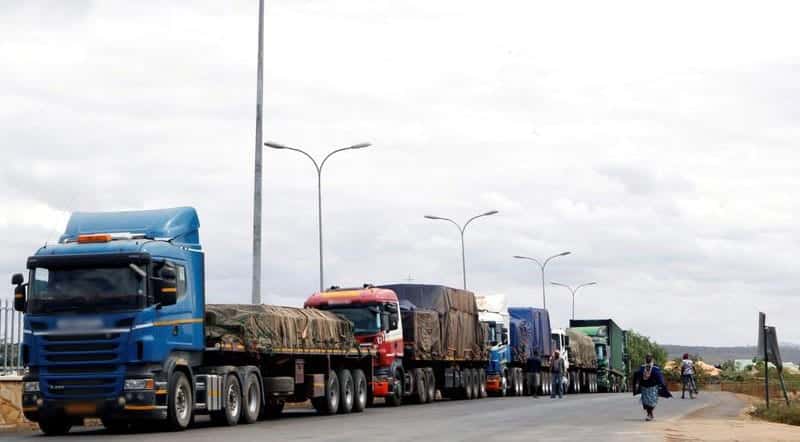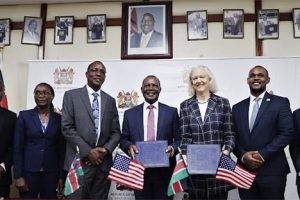
Kenya-Tanzania border friction highlights the need for structural solutions ahead of digitalization
Recurring Cross-Border Challenges
An opinion editorial recently published by The African Report argued that the Kenya-Tanzania border friction requires a digital approach to end the consistent squabbles between the neighbors and enhance cross-border trade. However, the relationship between Kenya and her neighbor is one devoid of cooperation as the two nations continue to compete with historical rivalries creating strong barriers that are occasionally instituted impacting business negatively. This is despite the two nations having clear comparative advantages as indicated by leading exports between the two nations. Moreover, the commitment of the two nations to the African Continental Free Trade Area (AfCFTA) investment protocol, and the East African Community (EAC) Common Market Protocol which guarantees the free movement of goods, services, capital, and investment has done little to help.
While digitalization is a facet of easing the recurring challenges in cross-border trade between the two nations, underlying structural and regulatory challenges that prevent free movement of goods, services, and capital repel investment, and slow regional development and integration must be dealt with. A recent Economic Survey for 2023 showed that Kenya exported goods worth Tsh1.14 trillion to Tanzania in 2022 compared to Tsh 911 trillion in 2021 highlighting the business potential with harmonized cross-border rules and regulations.
“Critical to thriving and competitive private sectors among the neighbors are clear and coherent [trade] rules.”
However, trade between the two nations has been marred by continued trade wars, protectionist policies, business registration, and border clearance bottlenecks among other challenges that fluctuate trade volumes between the two nations. With the two nations having announced that 54 out of the existing 64 non-tariff barriers have been resolved, more needs to be done in solving these trade challenges even as the neighbors consider increased digitalization of trade across the borders. These efforts need to include the elimination of all barriers and impediments to trade and investment with a reduction in the cost of doing business to boost exports and investments.
Leveraging the Private Sector
At the core of the EAC and the AfCFTA is the need to establish common markets that include East African nations to facilitate global competition while improving domestic industries, and increasing trade, and investment in the region. Kenya and Tanzania therefore deserve and owe it to a private sector to create a stable environment for cross-border business to help grow the economies and improve livelihoods for the citizens. Critical to thriving and competitive private sectors among the neighbors are clear and coherent rules that allow entrepreneurs to establish and operate their businesses and provide goods and services to the domestic and export markets. In the past, the relationship between Kenya and Tanzania has often been characterized by fluctuating customs rules and regulations that cause compliance challenges for private businesses.
Recently, Tanzania has used its export licensing Authority Brela to frustrate Kenyan transporters within borders due to sudden changes such as tax clearance, increased customs fees, and the need for additional quality checks. Equally, Kenya has periodically hiked customs fees and accused her neighbor of transporting contaminated produce among other unsubstantiated claims. The inconsistencies in cross-border rules and regulations between the neighbors are a significant impediment to smooth trade and often result in inconveniences and business costs. The countries therefore need to work on the harmonization of rules for trade under the guidance of the AfCFTA and EAC trade protocols to right the wrong and allow the private sector to thrive.
Reported non-trade barriers
A peer-to-peer expedition between Kenyan and Tanzania private sector players in 2016 reported multiple non-trade barriers that continue to persist to date impacting trade. Either country is dealing with multiple imitations involved in imposing levies and inspecting goods further inflating the costs and time spend cross borders for businesses. Corporation is thus needed in harmonizing lensing and imposition of levies and duties to ease movement of goods with preference for a single entity on either side of the trade route. The two nations have to take action against the high cost of regulations at the borders where document processing takes as long as 10 days to be processed, the non-recognition of EAC trading licenses in Kenya, and high business permit charges that keep soaring between numerous trade agreements that govern trade.
Digital platforms can help streamline customs clearance processes by automating documentation and enhancing online submissions to reduce time and effort. A harmonized and standardized digital customs system between Kenya and Tanzania can help ensure that customs procedures are transparent, predictable, and efficient. The denial of preferential treatment of goods manufactured in either country, especially edible oil and cement for Kenya and wheat flow and gas products in Tanzania is a recurring problem that has to be prioritized for trade to continue inhibited in the region. Reportedly, the challenge of non-harmonized road user charges and road tolls which brings about differences in charges when transporting goods to different regions within the two nations leading to varying costs has a further impact on goods pricing and ought to be handled.
Cross-border between Kenya and Tanzania holds immense promise for the East African Region and improving the living conditions for citizens of the two nations. The countries will however need to work on underlying structural challenges ahead of suggested digitalization efforts to further streamline trade across borders and revamp trade volumes and value for traders.



